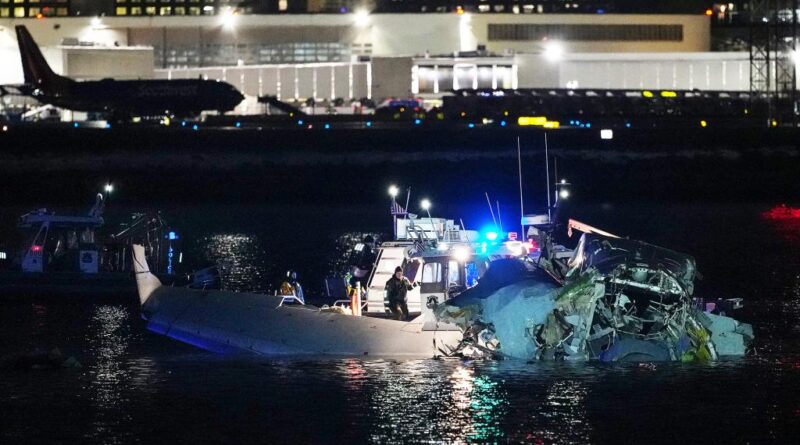Hold FAA Accountable for Outdated Air Safety Measures

We are still unaware of the errors that led to the tragedy at Reagan National Airport, which took the lives of 67 individuals last week.
However, it has been evident for many years that America’s air traffic control system, once the most advanced globally, is now a source of international embarrassment.
Long before the Obama and Biden administrations sought to diversify control tower staffing, the system was already one of the least effective among developed nations.
A recent surge in near-miss incidents emanates from enduring mismanagement, resulting in an insufficient number of controllers reliant on ridiculously outdated technology.
Two decades ago, it was clear these issues existed when I toured control towers in both Canada and the U.S.
In Canada, controllers operated with sleek computer interfaces that seamlessly managed tasks such as transferring aircraft oversight between controllers.
Conversely, in the U.S., controllers were still relying on paper flight strips.
Once a plane took off, the local airspace controller had to physically move that plane’s flight strip to the desk of the controller overseeing the regional airspace.
The experience felt like a throwback, reminiscent of a scene from “The Front Page.”
Seeing such obsolete technology in 2005 was troubling enough.
Yet, they are still utilizing those paper flight strips in American towers, with the FAA’s modernization timetable pushed back so often that the strips are not expected to be phased out until 2032.
The rest of the system mirrors this antiquation.
The U.S. lags behind Europe in utilizing satellites for aircraft guidance and monitoring, forcing pilots and controllers to rely on less accurate data from radio beacons and ground radar.
While overseas controllers employ high-resolution cameras and infrared technology to observe aircraft on runways, many American controllers still have to look out the window — which led to a near-miss incident between a FedEx cargo plane and a passenger jet two years ago in Austin, Texas.
On that foggy morning, the controller was unaware that a Southwest airliner was on the same runway awaiting takeoff.
In a critical moment, the FedEx pilot aborted the landing, narrowly avoiding the other aircraft by less than 100 feet.
The core issue, which reform advocates have attempted to address since the Clinton era, is that the system is managed by a cumbersome federal bureaucracy — the same one charged with ensuring air safety.
The FAA is meant to serve as a watchdog, yet we have placed it in charge of supervising itself.
Almost all other developed nations wisely separate these responsibilities, allowing a federal aviation agency to oversee an independent corporation that manages the control towers and the overall system.
This independent operator could be a state-owned entity (as seen in Australia and Switzerland), a nonprofit (as in Canada), or a private company (as in the U.K. and Italy).
The Trump administration attempted to initiate a similar setup in 2017, proposing a not-for-profit corporation to manage air traffic control.
The proposal received support from some Democrats and even the union representing air traffic controllers, which had previously obstructed reform but ultimately recognized the need for change.
However, the bill stalled because many lawmakers wanted to maintain Congress’s control over the system — and the accompanying campaign contributions.
Following the recent Washington incident, could the next Trump administration and a newly elected Republican Congress finally establish a state-of-the-art system?
“Now the public and opinion leaders are far more aware of the FAA’s deficiencies,” states Robert Poole of the Reason Foundation, a leader in the reform initiative.
“With the Trump administration and other forces causing disruption, perhaps the time for genuine reform has finally arrived.”
Last week, Trump issued an executive order to assess aviation safety, concentrating on DEI hiring practices for air traffic controllers — while that is a real issue, it pales in comparison to the FAA’s more pressing concerns.
Regardless of whether the controller was at fault for the recent crash, the FAA has been mandated to abandon identity politics and hire controllers based solely on merit.
This represents progress, but America’s air traffic operations will continue to be hindered by mid-20th-century technology until they are managed by an independent corporation that is accountable to regulators yet unencumbered by congressional micro-management, annual budget conflicts, and convoluted federal regulations.
International examples demonstrate that an independent corporation, funded through user fees rather than taxes, can modernize air traffic control significantly more effectively and economically than a government agency.
Reforming the system would contribute to diminishing the DC swamp, reducing the federal budget deficit, enhancing aviation safety, minimizing flight delays, and saving costs for both airlines and passengers.
While it is uplifting to contemplate sending Americans to Mars in a new Golden Age, it is nonsensical that those traveling domestically are still operating with Stone Age methods.
John Tierney is a contributing editor at City Journal and coauthor of “The Power of Bad: How the Negativity Effect Rules Us and How We Can Rule It.” Adapted from City Journal.



